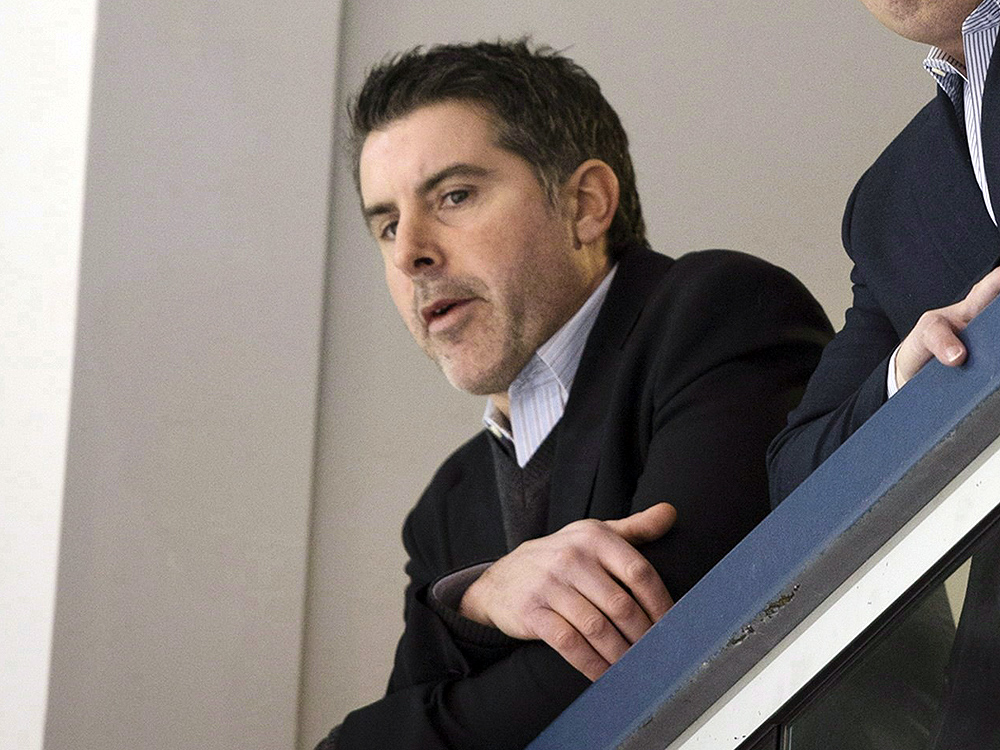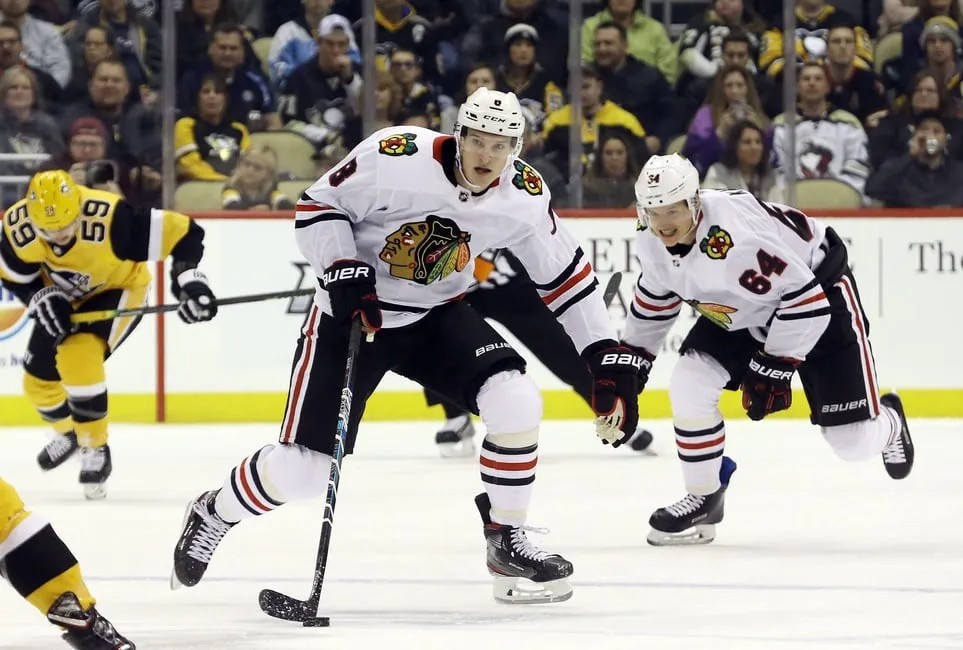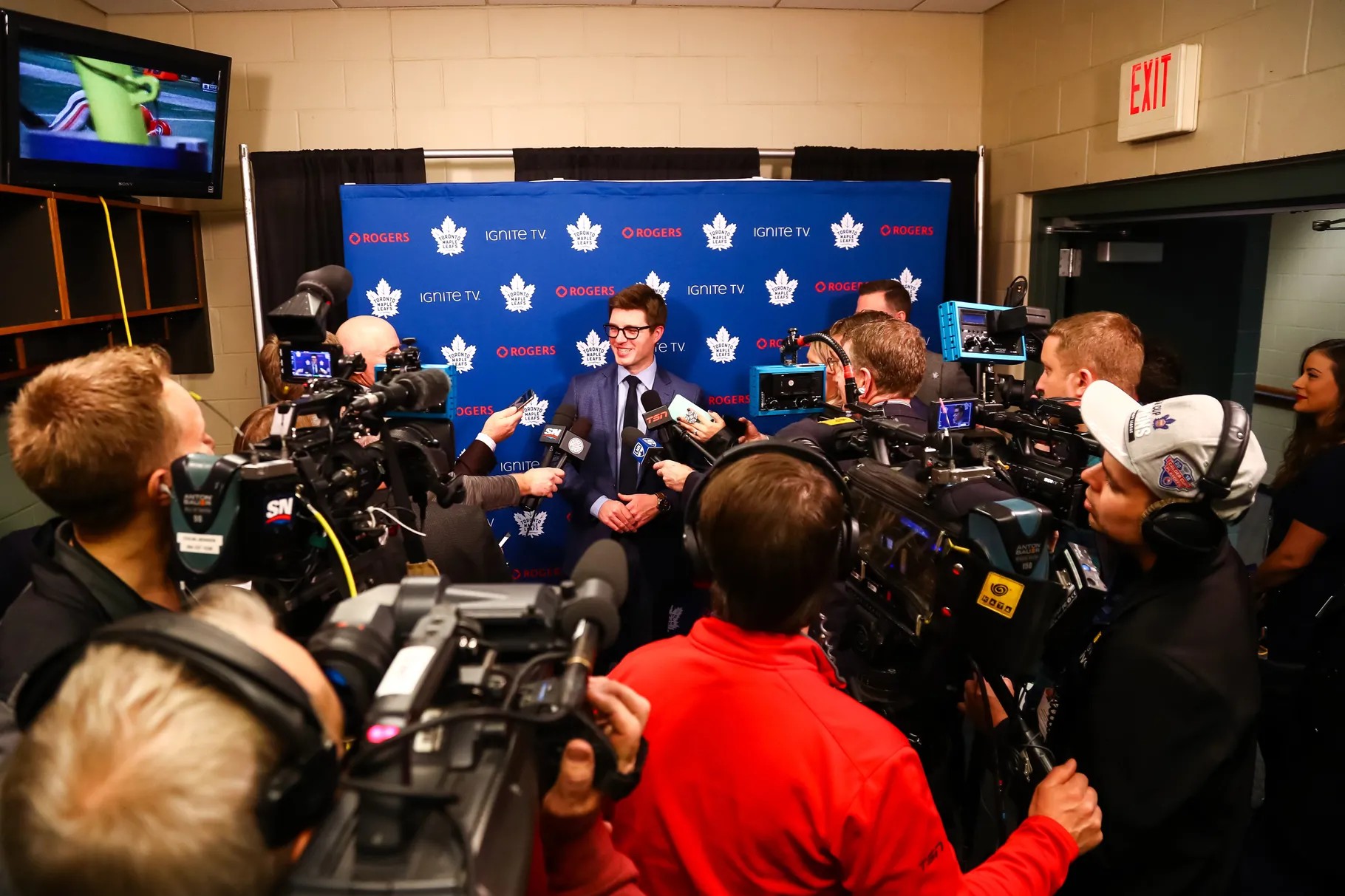Entering the 2022 offseason, the Maple Leafs’ most pressing question was unquestionably goaltending. Leafs management acted accordingly.
They cleared out Petr Mrazek’s contract, they met with Jack Campbell but did not reach an agreement, and finally, they pushed in their chips (by chips, we really mean cap space) by acquiring Matt Murray.
On the whole, the work done so far has netted out to:
Out: Mrazek (3.8 x 2), 25th overall
In: Murray (4.7 x 2), 38th overall, 2023 third, 2024 seventh
There will be plenty of time to discuss Matt Murray the goalie and watch how it plays out. Frankly, goalies are magic beans, and you could convince me one way or the other on Murray’s prospects for rebounding in a Leafs sweater. He’s still young enough (28), has had success in the league as a starter and a playoff performer, and there’s some evidence – if you squint – that he was still capable when healthy.
On the other side of the coin, Murray has struggled to stay healthy, and it’s fair to question his ability to handle a starter’s workload. Over the past three seasons, he is tied for 56th in save percentage out of the 64 goalies that have played at least 50 games. If there’s a position where past performance isn’t always indicative of future performance, it’s goaltending. That said, Murray basically played himself out of the league at one point.
How the gamble plays out is only going to be known in time, and for the purposes of analyzing the move today, it’s secondary. Almost every goalie possibility involved a gamble. Jack Campbell has never played a 50-game season in the NHL. Neither has Ville Husso or Alexander Georgiev. Darcy Kuemper has done it twice. John Gibson has been trending down for three seasons. Marc-Andre Fleury never made it to the open market. Netminders like Vitek Vanecek and Ilya Samsonov are mystery boxes.
Now, based on age, career track records, cap hits, and recent play, do I think there were safer bets to be made? Yes. Maybe Murray will pan out and it’s all irrelevant in a year from now. If he does, Kyle Dubas will look like one of the smartest players at the poker table. If he doesn’t, it won’t just be Murray the player that is problematic.
The value is the real problem. The Leafs gave up nothing to acquire Murray and for good reason: Essentially nobody in the league wanted him with his current contract, and the one other team that did (Buffalo) was on his no-trade list.
Ottawa is a small market team that has two goalies ahead of him on the depth chart, and Murray is slated to make $15 million in actual cash over the next two seasons. Not even a week ago, Ottawa was prepared to package him and the seventh-overall pick to drop back to pick 16.
You could argue the Leafs were desperate for a goalie, but really, this was a game of a chicken, and the Leafs blinked first. This is not the first time this management group has managed to squander a position of leverage.
The Leafs took on this gamble for the price of a 25% salary retention, a third, and a seventh. Even if it pans out, the value gleaned here was poor. They didn’t give themselves a big enough salary-cap cushion as insurance, and they didn’t sweeten the pot with assets of significant enough value (i.e. netting a player or higher draft picks).
In fact, I can confidently say this is the least calculated move of this regime’s tenure. Kyle Dubas hasn’t protected himself at all here. It’s a boom-or-bust swing for the fences.
The Maple Leafs’ cap situation ahead of free agency

The Leafs will now head into free agency with the following roster (and holes), which they have around $8 million in cap space to fill out:
Bunting – Matthews – Marner
Kerfoot – Tavares – Nylander
Robertson – Kampf
Rielly – Brodie
Muzzin – Holl
Giordano – Liljegren
Murray
The $8 million has to be used to:
- Sign Pierre Engvall
- Sign Rasmus Sandin
- Sign at least three additional forwards (or promote from within; I did not include the Kyle Cliffords, Wayne Simmonds, Alex Steeves of the world)
- Sign a backup goalie (or promote from within)
That’s an average of $1.3 million per player, and that’s definitely a number Engvall specifically will be exceeding. Last year, a 26-year-old Teddy Blueger – the same age Engvall is now – was coming off a seven-goal, 22-point season in just 43 games and signed for $2.2 million per year for two years. Engvall – coming off a 15-goal, 35-point season in 78 games – compares fairly closely. In his first three years in the NHL, Blueger posted a career .39 points per game while Engvall sits at .37 at the same juncture in his career.
After signing Engvall, the Leafs could be looking at just under $6 million in cap space to fill out, at a minimum, three forward spots, a backup goalie, and bring back Sandin.
That is just to fill out the roster. How are they going to improve the team?
The internal options and the free-agency bargain bin

I certainly wouldn’t pay Ilya Mikheyev the near $5 million he reportedly wants, but he was very good last season. It’s possible to bank on Nick Robertson emerging as the season goes on, but those are very different players. Mikheyev was fourth among Leafs forwards in shorthanded time-on-ice per game last season and was a key member of the team’s checking line. Robertson projects as a scoring forward.
It would be disappointing if the offseason essentially boils down to signing a bunch of depth forwards, taking a huge gamble in net, and doing nothing of significance to demonstrably improve the roster.
So what’s left at this point?
Elliotte Friedman just reported that the Leafs have interest in Zach Aston-Reese and/or in potentially bringing Denis Malgin back from Switzerland. That’s not going to move the needle much, but in the case of Aston-Reese – or a Tyler Motte type as well – I do think there is value in adding a legitimate, proven NHL forward to anchor their fourth line while providing some checking value and physicality. Adding a steady player makes it much more palatable for the Leafs to pair up a Marlie – such as an Alex Steeves – to protect him and provide some veteran insurance.
The question for the fourth line – presuming they do sign an Aston-Reese type (which I am guessing is likely and is something I would endorse) – is whether Wayne Simmonds and/or Kyle Clifford are also in the mix. My guess is that they don’t have the nerve to send Simmonds down. I assume he’ll be in the lineup to start the season, even though he played his way out of the playoff lineup and is only getting worse at this point in time.
Short of clearing cap space to change the roster around (I’ll reiterate that Alex Kerfoot – coming off a career-high season, not a play driver, a year away from UFA – is an easy player to sell high on right now), the main thing the Leafs can really do in search of upside is to explore the unqualified market. That is where the team added David Kampf last summer with good results.
There are a few candidates of interest. Kampf’s former teammate, Dylan Strome, is receiving a bunch of attention on the free-agent market, but it’s another of his former teammates, Dominik Kubalik, that is of particular interest to me. He has 116 points in 202 NHL games, including a 30-goal season in his rookie year. He’s 6’2, has a great shot, and can play with skilled players.
Over three seasons in Chicago, Kampf and Kubalik actually played over 430 minutes together at 5v5. They were essentially even in corsi, slightly above water at fenwick, outscored opponents by three, and controlled a near 55% expected goals despite a 32% offensive-zone faceoff percentage. And that’s on a horrible Chicago team.
Kubalik is a much different player than Mikheyev, but he’s arguably a better goal scorer and he’s the same size. Kubalik is essentially a good finisher but doesn’t drive play much. I can picture a seamless fit alongside Kampf and Engvall on a cheap contract. He is also a credible second power-play unit half-wall option to replace Jason Spezza with his bomb of a shot.
That type of addition – to go along with an Aston-Reese type (a physical grinder and penalty killer) and bringing back Engvall – gives them four credible NHLers (including Kampf, of course) in the bottom six and two spots for Marlies/Wayne Simmonds/Kyle Clifford to compete for. Is it sexy? No, but there is potential for upside with a good floor to protect the outlook of the team.
There are other unqualified players worthy of consideration.
The Leafs could contemplate returning Ondrej Kase at a reduced rate, although I’d personally rather see them acquire players they can trust to stay healthy.
Jonathan Dahlen flashed promise on a really bad San Jose team last season in his rookie year and went unqualified by a brand-new GM. There is potential here.
Nicolas Aube-Kubel was a regular on the Stanley Cup champions during the regular season and appeared in 14 playoff games. He fits the Aston-Reese/Motte ilk.
Brett Howden is just 24 years old, can play center, and tallied 20 points in 47 games (he is also 6’2). He could be an inexpensive 4C with some reasonable upside to help anchor the Leafs’ fourth line.
And then there is the question of a second goaltender. Ideally, Erik Kallgren is the team’s third goalie (if the past few seasons have taught us anything, it’s that the Leafs’ third-stringer is going to play some games).
Ilya Samsonov was not qualified by Washington, and while he has struggled recently, he’s just 25 with nearly 100 games to his name. Eric Comrie doesn’t have the experience of Samsonov, but he just turned 27 and was good last season with a .920 save percentage in 19 games on a fairly-mediocre Winnipeg team. That type of younger gamble with some upside is the type of hedge that is affordable, intriguing, and raises the floor for the goaltending department.
On defense, the goal should be to retain Sandin and let the roster battle play out from there. The Leafs already have seven NHL defensemen. We floated the idea of moving out money on the defense in a previous offseason writeup; while that remains viable, with the draft over with and many trade candidates already moved, what would be the play?
Sell off the cap space now and become worse on defense? Perform some gymnastics where the team trades away a Jake Muzzin, clears cap, then prays to land a UFA of note? At this point, it seems wiser to simply run back the defense group. It’s a really good overall unit.
If you’re asking me, I still think there’s value in signing a UFA forward of note — an Andrew Copp or Nino Niederreiter, who I think better fit alongside John Tavares and William Nylander. But they would have to clear cap space to make that kind of move, and time is running out on free agency.
Goaltending needed to be the priority, and the Leafs have made their move there. Unless they follow it up by clearing cap space, the remainder of the offseason will mainly be focused on filling out the roster and bargain-bin hunting.






























![New Leaf Anthony Stolarz on the opportunity in Toronto: “In Florida, I knew my role as a backup… Now, [Joseph Woll] and I are competing for starts… As a goalie, that’s all you can ask for” Anthony Stolarz, Stanley Cup win, now Maple Leaf](https://mapleleafshotstove.com/wp-content/uploads/2024/07/anthony-stolarz-sc-100x70.jpg)
